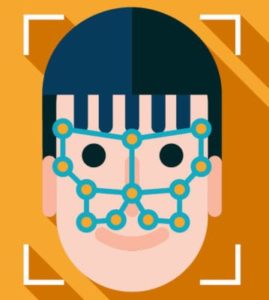
Another patent is hinting at Apple’s interest in bringing its Face ID system under the iPhone’s display, and describes what may be a technological breakthrough in the effort.
The hypothetical system revolves around the use of Horizontal Cavity Surface-Emitting Lasers, which could be installed under the display of an iPhone or Apple Watch and used to produce a 3D scan of a user’s face.
A couple of reports have breathlessly described the idea of the use of lasers as being, at first glance, “farfetched“, or reminiscent of some kind of weapons program. But the fact is that Apple’s pioneering Face ID system already uses laser technology, and it’s part of what makes Apple’s solution so accurate and reliable.
The current system is based on Vertical Cavity Surface-Emitting Lasers, a technology into which Apple has invested heavily. Essentially, the lasers are used to project an infrared grid onto an iPhone user’s face, enabling the generation of a three-dimensional map that can be used for biometric enrolment and authentication.
Now, Apple’s recent patent filing has attracted the attention and the engineering expertise of Patently Apple, which reports that Apple has delivered “a highly sophisticated filing that engineers in this field could appreciate.” The HCSEL system would essentially combine the advantages of VCSEL tech and “edge-emitting lasers (EEL)”, enabling a detailed and accurate 3D imaging system that could operate through a display.
Apple has a track record of exploring in-display face and fingerprint sensor technologies through IP filings, and the renowned Bloomberg analyst Mark Gurman has reported that Apple’s long-term goal is to bring both Face ID and Touch ID under the iPhone’s display.
The HCSEL system, according to Apple’s patent, would enable both modalities, in addition to further capabilities. The laser system could be used in combination with a photodetector to detect particulate matter in the air and estimate air quality; and it could gather metrics about the user’s attention to various parts of an Augmented Reality or Virtual Reality setting. It could also be integrated into a camera system to enable enhanced functionality.
None of this will necessarily end up in a real iPhone or Apple Watch, of course. Apple files a lot of patents, many of which describe technologies that have never come to fruition. But at this point it seems clear that Apple is pursuing under-display technology for its biometric systems, and this patent seems to describe a serious leap forward in that direction.
Sources: Patently Apple, Pocket-lint, Forbes

Follow Us